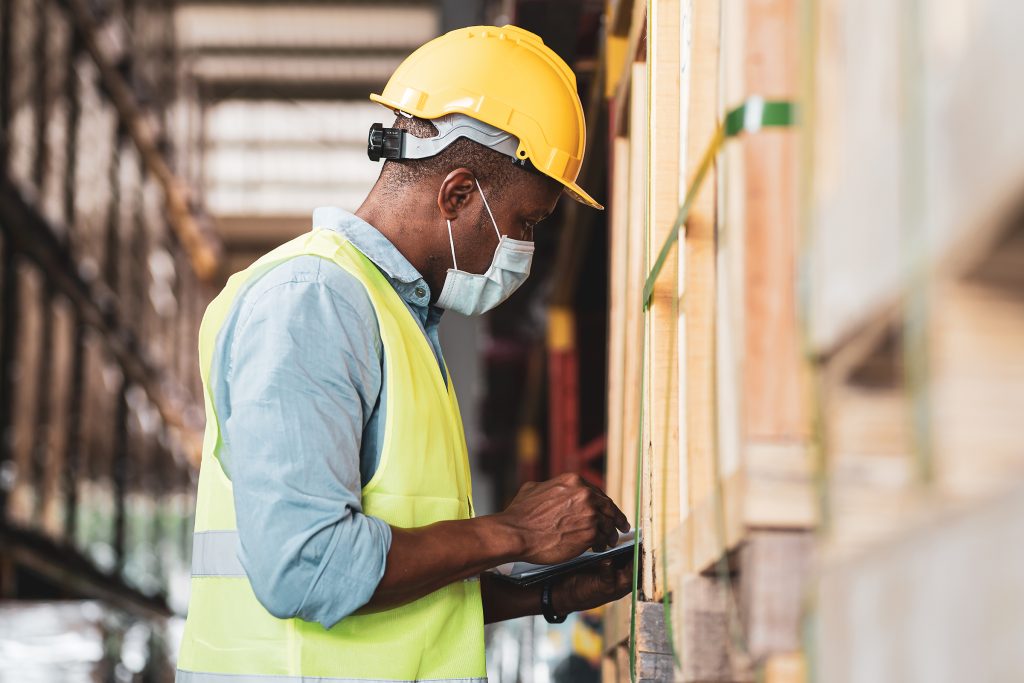
Employee Health and Safety Beyond COVID-19
A year ago, everything changed with the declaration of a global pandemic. Every industry has been impacted by a different magnitude from periodic shutdowns and closures to reduced capacities.
April 29, 2021 | By Mariete F. Pacheco
 Photo: Burin Pochai / iStock / Getty Images Plus.
Photo: Burin Pochai / iStock / Getty Images Plus. 
Photo: Burin Pochai / iStock / Getty Images Plus.
The one element that has changed for every business regardless of industry has been employee health and safety. Keeping employees safe during a health crisis such as COVID-19 has become paramount. Let’s look at what employee health and safety may look like in the future; post-pandemic.
Millions of dollars have been spent this past year in employee health and safety protocols; increased usage of personal protective equipment (PPE), such as masks and gloves, hand sanitizing stations, installing barriers and retrofitting HVAC systems with enhanced filtration and ventilation systems.
Of all the changes, will any of the new protocols become part of the much anticipated “new normal”?
The efforts made to contain and reduce the spread of the coronavirus, such as rolling lockdowns, physical distancing, mask wearing, reduced travel and increased hand washing, has had a significant impact as well on controlling the spread of the seasonal flu and common cold seasons.
Many of the COVID-19 protocols for manufacturing, food processing plants, construction sites and others have been focused on increased PPE usage and enhanced personal hygiene measures. These short-term operating procedures can be relatively quickly adapted or eliminated all together without much effort, based on local public health direction. The challenge remains to be seen as it relates to permanent and large-scale initiatives that organizations invested in to ensure compliance and protect employees during the early stages of the pandemic, when limited knowledge was available regarding virus transmission.
Employee health and safety will remain at the forefront for many industries and employers. Not only as a part of employee retention programs and demonstrating the organization’s social responsibility commitments, but also as a means of securing cost savings for sick days usages/productivity losses against future respiratory illnesses spreading. The longer-term focus on employee health and safety can be attributed to larger investments many organizations had made into not only more costly solutions, but also into semi-permanent/permanent remedies, such as physical barriers and improved HVAC systems.
The most visible long-term changes to supporting employee health and safety has been the addition of physical barriers in manufacturing and assembly plants. These are similar to the clear barriers/shields that have become common place in retail stores, banks and restaurants.
This physical barrier has been vital to protecting employees in high-risk and close-quarters operations to aid in maintaining space between employees when the recommended six-feet distance is not possible. In those facilities whereby, employees must remain working on site.
There has been an increase in requests for installation of touch-free fixtures and touch-free appliances. Some of these touch-free items have been around for years, such as touch-free plumbing products like paper towel and soap dispensers, faucets, toilets and electric hand-dryers, which offer not only protection against cross contamination and transition between users, but also offer cost saving benefits through reduced usage.
The more recent addition to the touch-free industry has been voice/motion-activated smart lighting solutions, which offer a hands-free option for maintaining a safely lit work environment. Once either of these solutions are installed, it is highly unlikely of their removal and will remain to be used well beyond the duration of the pandemic.
Another tread in the hands-free movement has been use of foot-activated appliances or fixture, which, although not touchless, keeps a user’s hands from possibly transferring viruses from the appliance to their face. Commonly used in garbage cans, the shift to appliances such as foot-activated water coolers, coffee dispensers and door pulls have taken off due to the fears of transmission risk. Once staff return to working at facilities, these too will likely remain as a staple, given their higher cost compared to their traditional counterparts or to the semi-permanent installation of the door pull systems.
A far less visible and much higher priced solution used in high occupant dense or dusty work environments are enhanced HVAC systems. This can be as simple as replacing existing air filters with the highest minimum efficiency reporting value available, or using HEPA filters, which can capture air-borne contaminant as it filters the air through the heating or cooling system.
As part of the many provinces and territories re-opening strategy, guidelines have been shared regarding HVAC systems, including increasing ventilation throughout a facility, either through mechanical methods, such as fans, or encouraging natural ventilation, such as opening doors or windows.
Finally, maintain pressurization in public areas compared to private areas, since these are centres for breeding infection due to their high traffic nature, such as hallways, elevators and corridors. The enhancements made to the HVAC systems are generally on the higher end due to their complexity and scope of possible physical changes made to the physical building, which lends itself to becoming a permanent improvement made to keeping employees healthy and safe.
Each organization is obligated to maintain a standard of employee health and safety, but never has it been so profound as now. During challenges, businesses evolve to adapt and overcome the current difficulties, and would revert to the previous methods of operating once the threat is no longer there. However, with the duration and global implications of COVID-19, impacts have become memorialized beyond the present and will change how businesses approach employee health and safety for years to come. MRO
_____________
Mariete F. Pacheco has over 15 years of procurement and supply chain management experience across a variety of industries including industrial, construction, retail and more.
Advertisement
Stories continue below
